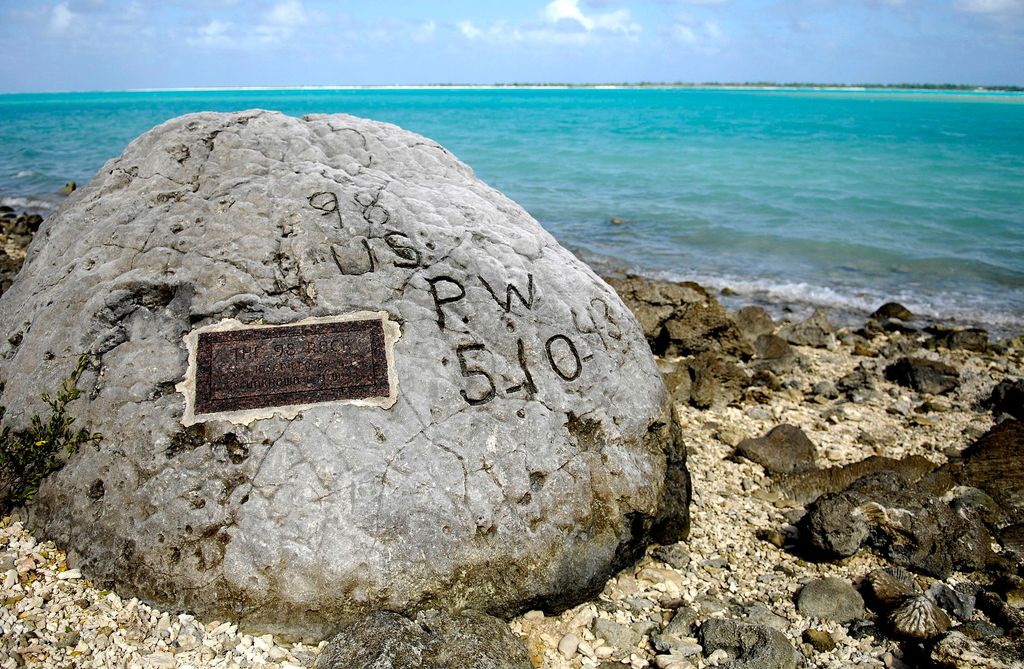| Description |
: |
On 5 October 1943, American naval aircraft from Lexington raided Wake. Two days later, fearing an imminent invasion, Japanese Rear Admiral Shigematsu Sakaibara ordered the execution of the 98 captive American civilian workers who had initially been kept to perform forced labor. They were taken to the northern end of the island, blindfolded and executed with a machine gun.
One of the prisoners (whose name has never been discovered) escaped, apparently returning to the site to carve the message "98 US PW 5-10-43" on a large coral rock near where the victims had been hastily buried in a mass grave....
Read More
|
On 5 October 1943, American naval aircraft from Lexington raided Wake. Two days later, fearing an imminent invasion, Japanese Rear Admiral Shigematsu Sakaibara ordered the execution of the 98 captive American civilian workers who had initially been kept to perform forced labor. They were taken to the northern end of the island, blindfolded and executed with a machine gun.
One of the prisoners (whose name has never been discovered) escaped, apparently returning to the site to carve the message "98 US PW 5-10-43" on a large coral rock near where the victims had been hastily buried in a mass grave. The unknown American was recaptured, and Sakaibara personally beheaded him with a katana. The inscription on the rock can still be seen and is a Wake Island landmark.
On 4 September 1945, the remaining Japanese garrison surrendered to a detachment of United States Marines under the command of Brigadier General Lawson H. M. Sanderson, with the handover being officially conducted in a brief ceremony aboard the destroyer escort Levy. Earlier the garrison received news that Imperial Japan's defeat was imminent, so the mass grave was quickly exhumed and the bones were moved to the U.S. cemetery that had been established on Peacock Point after the invasion, with wooden crosses erected in preparation for the expected arrival of U.S. forces.
During the initial interrogations, the Japanese claimed that the remaining 98 Americans on the island were mostly killed by an American bombing raid, though some escaped and fought to the death after being cornered on the beach at the north end of Wake Island. Several Japanese officers in American custody committed suicide over the incident, leaving written statements that incriminated Sakaibara. Sakaibara and his subordinate, Lt. Cmdr. Tachibana, were later sentenced to death after conviction for this and other war crimes.
Sakaibara was executed by hanging in Guam on June 18, 1947, while Tachibana's sentence was commuted to life in prison. The remains of the murdered civilians were exhumed and reburied at Section G of the National Memorial Cemetery of the Pacific, commonly known as Punchbowl Crater, on Honolulu.
A bronze plaque bears the names of the 98 executed civilians.
Though the date on the rock is October 5, 1943, the massacre is documented to have taken place two days later, on October 7, 1943, which is reflected in the death dates of all memorialized here.
Apparently, the unknown hero who documented the site of the mass grave, by carving information on what has become known as "98 Rock," had lost track of the date after roughly 2 years as a prisoner. |

